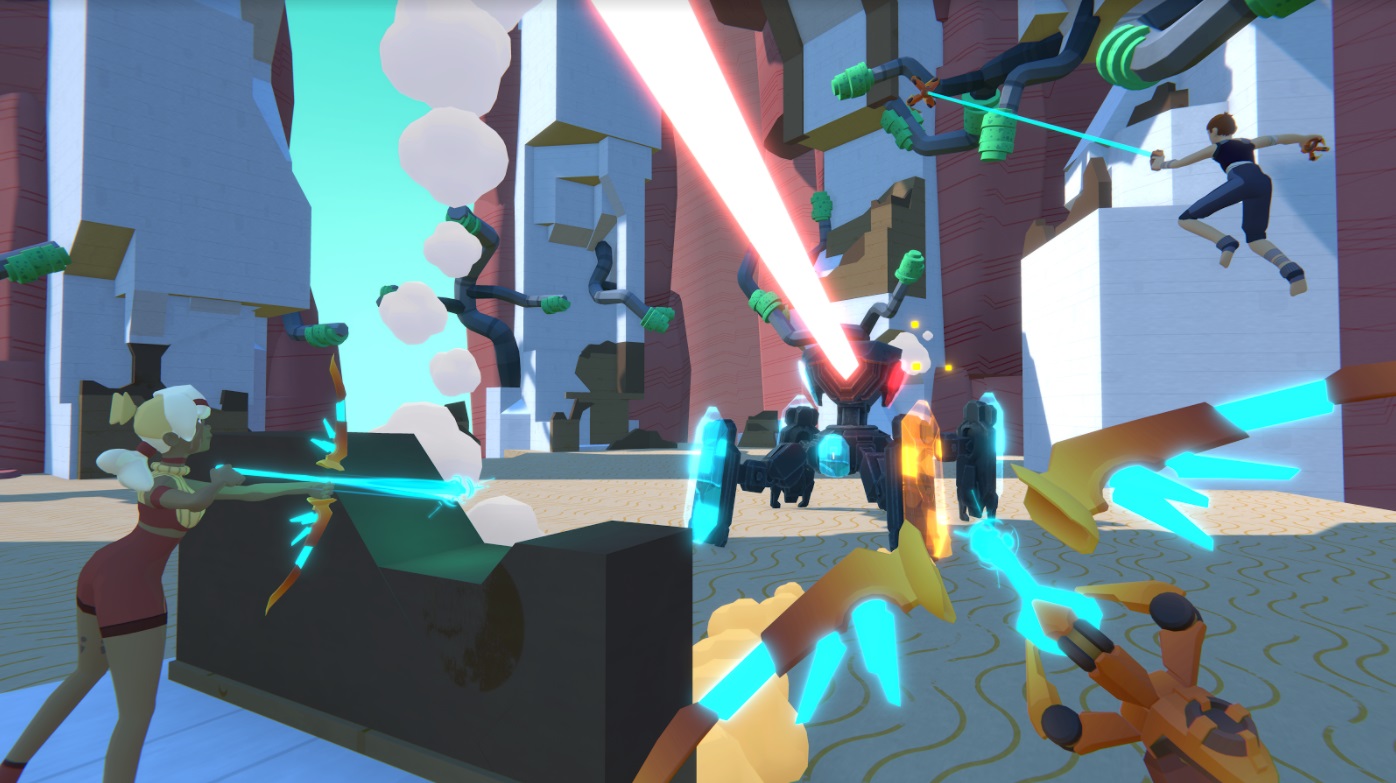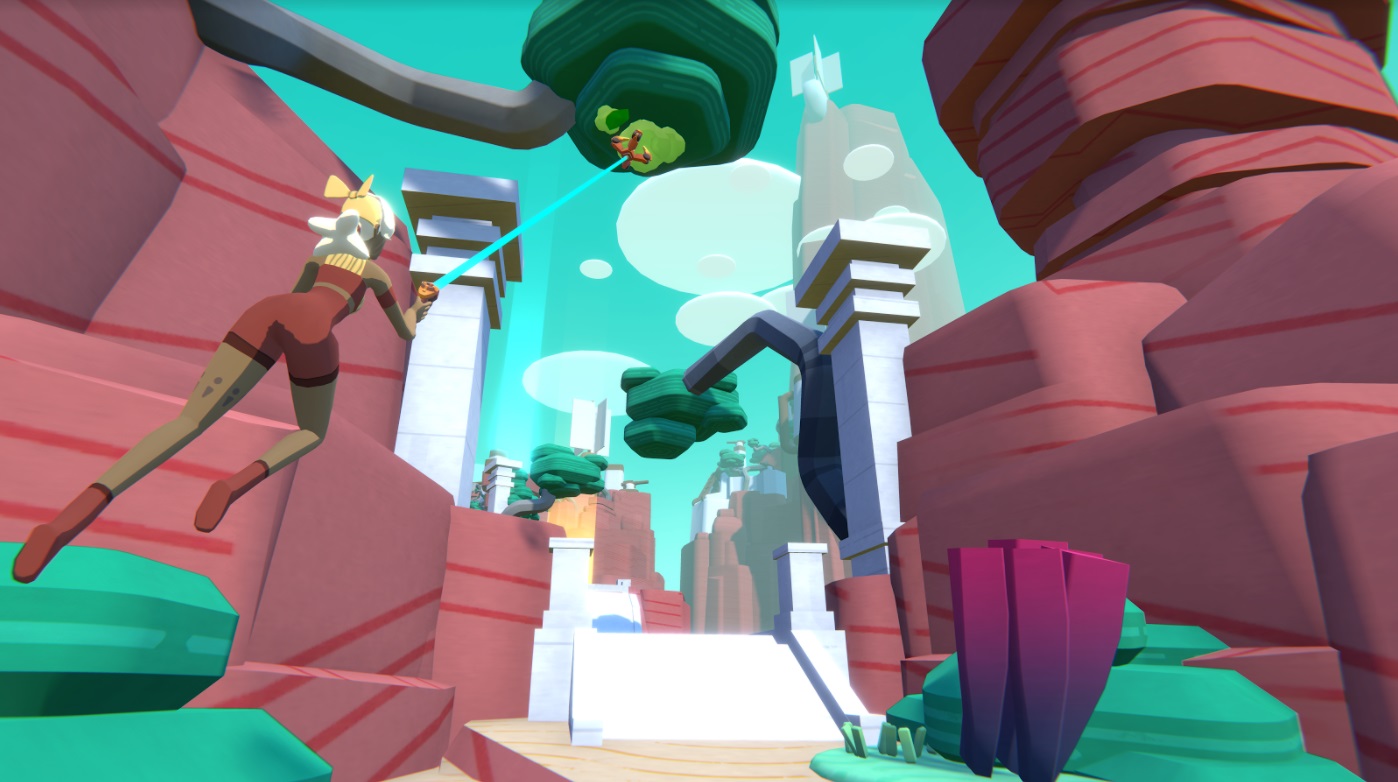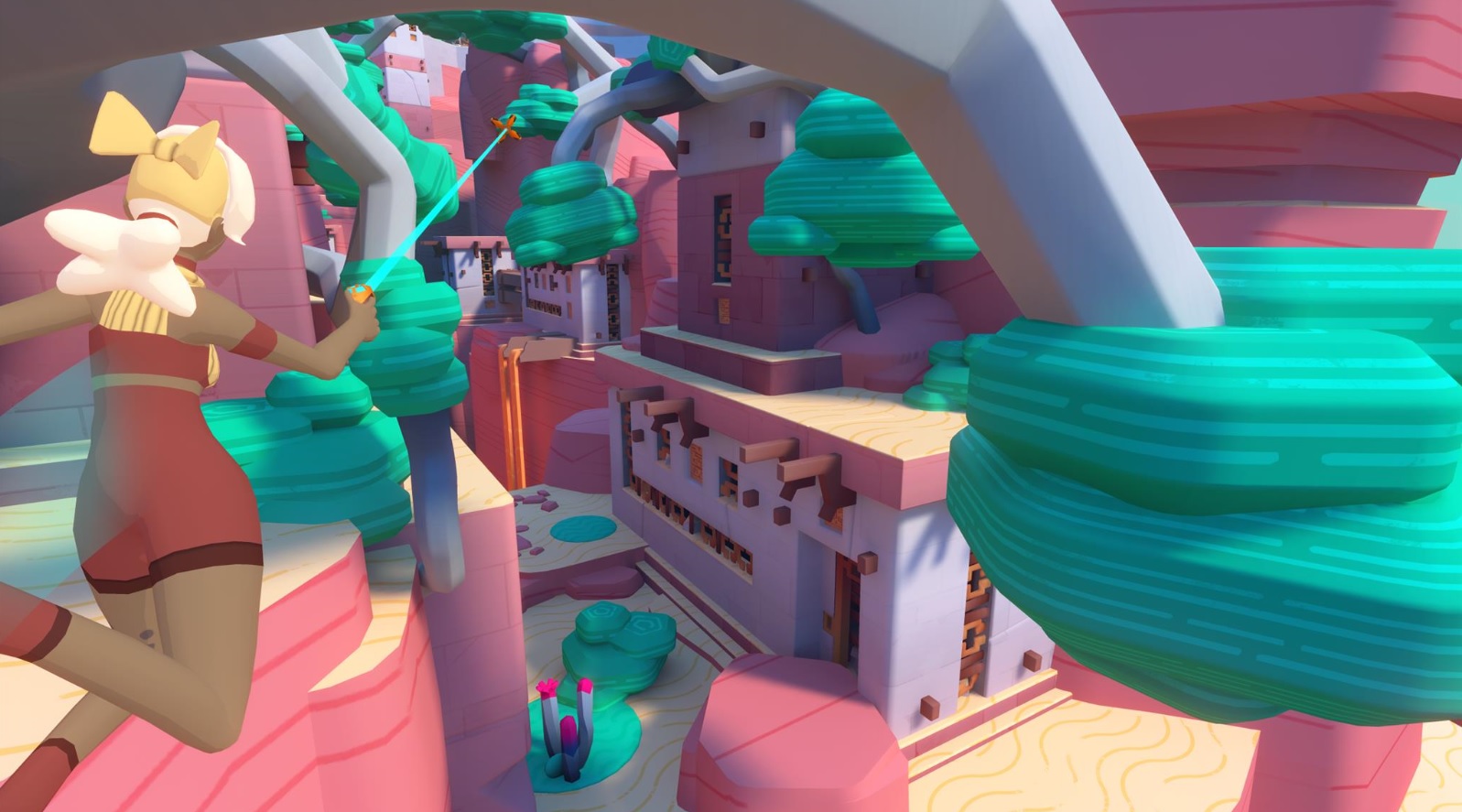Windlands 2 was somewhat hidden at this year’s PAX West. The staff in the convention center didn’t know what I was talking about when I asked about it, but suggested that I head offsite, to the VR play area at the nearby Mattis hotel. There, with a relative lack of ceremony, Windlands 2 was one of the twenty or so games that was available to play at every station.
It’s actually refreshing. Not only was there no attendant hype blitz, but many of the people who would otherwise be there to talk the game up weren’t entirely sure what the game was. In some ways, this was the perfect booth demo: “I think it’s over there. Go play it. Or don’t. Either way.”
When I did finally track the damn thing down, Windlands 2 took some getting used to. In a low-gravity world that looks like it was carefully built out of modeling clay, you play the role of a novice “hunter,” who’s being shown the ropes of the profession by an elderly mentor. This involves exploring the landscape with the help of twin grappling hooks, as well as fighting robots with the help of your trusty bow and arrow.
You spend most of Windlands 2 high in the air, floating between giant rock islands in the sky. If you miss a jump, you simply respawn back on solid ground without much more than damage to your pride, but the fall takes a long time. There’s an entire button dedicated to respawning, the same way puzzle games often have a reset switch for a given room, so you don’t have to watch the landscape rush up at you for any longer than necessary.
Your primary tools for exploration are a pair of grappling hooks, which are linked to the triggers on both controllers, and which can be used independently. You can hook onto specific parts of the landscape above you, mostly the bits that aren’t visibly made out of rock, and use them to pull yourself into the sky.

The trick is that you only really have the momentum generated by that initial pull, so you go sailing in the general direction of your target. From there, you must hook onto your next point, and the next, in such a way as to carefully control your flight through the air. The hooks have a surprisingly long range, but not as long as you might think, and while the areas that can be grappled to are very well-labeled, they’re also surprisingly easy to miss. When it works, you gently soar through the air, flying around like Tarzan in a Technicolor jungle; when it doesn’t, you describe a long, dizzying arc directly towards the ground, and it’s going to be a lot faster to hit the respawn button than it is to wait to land.
I get the feeling this is the sort of thing that’s got a learning curve to it, and which will feel and look amazing once you put in the time to master it. Grappling around the landscape is smooth and relatively intuitive, although you have to be very sure to remember to release your previous hook before you try to throw out a new one, but I could tell from the moment I first left the ground that it would have a learning curve. You really aren’t in as much control as you feel like you are at any given time, so it tests your reaction and spur-of-the-moment decisions as much as anything else.
The penalty for failure is basically zero aside from a little wasted time; you just reappear at the nearest spawn point in a puff of cartoon smoke. That, and the low gravity, lend the whole thing a dreamlike quality, like old surreal cartoons.

When combat comes up, which was rare in the demo but involved hostile mechanical creatures, the bottom two buttons on the controllers were set to pull out your character’s bow and arrow. The left button turned your grappling hook into the bow, while the right button let you pull back on the glowing orb in the bow’s center until it turned into a makeshift arrow. You get a tiny laser sight to indicate where the arrow’s going to hit, which is helpful, since accuracy is important; most of the enemies I saw had a big glowing weak point to hit.
The combat didn’t actually strike me as that remarkable, but the bow looks cool. The whole game has this crawling-from-the-wreckage aesthetic underneath the colorful scenery, like you’re using some of what little high technology was left over after some long-ago apocalypse, and the magic tech-punk bow fits neatly into it.
I only got the chance to play Windlands 2 for a little while, which was long enough to take a look around and get a feel for the experience. It reminds me of some early NES games, where there’s a substantial challenge lurking underneath the colorful landscapes and bright visuals, although the challenge here is in mastering the act of movement. At the same time, the lack of punishment for failure makes it feel like a sort of designer playground. It’d make a great game for kids, or for parents to play with their kids, as long as nobody has a problem with (virtual) heights.

Windlands 2 is slated for release on Oculus Rift very soon on September 12th for $29.99 with HTC Vive and PSVR support to follow at later dates. Stay tuned for our full review next week.
Thomas Wilde is a freelance gaming journalist. You can follow him on Twitter for more of his work.

























